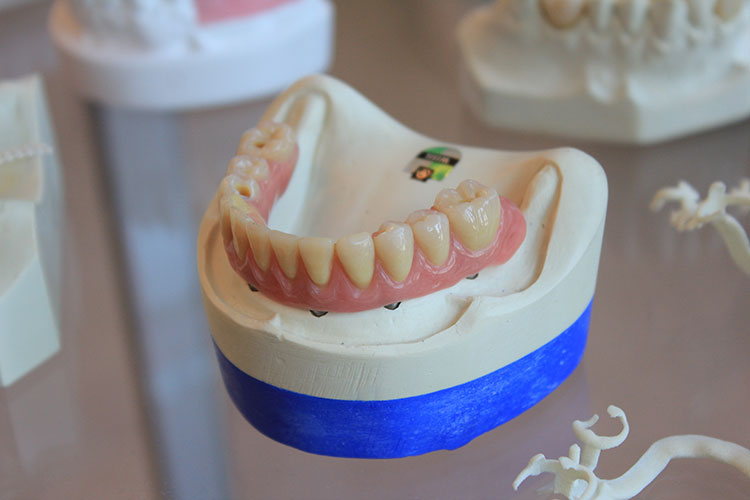History
On Aug. 8, 1980, Chuck Hull filed a patent on a new device that produced three-dimensional objects using “stereolithography”—the world’s first 3D printer.
Forty years later, Hull’s gadget is being used by industry, medicine, and dentistry in ways he could have never imagined. Dentistry is rapidly adopting the technology for applications from denture and partial fabrication, to surgical guides for implants, to orthodontic treatments, to nightguards.
Related: How to Choose the Right Mouthguards and Night Guards
Three-dimensional printers use an additive manufacturing method to produce items by laying down multiple layers of material using representations produced by computer-aided design (CAD) technology and 3D scanners. Resins specifically developed for dentistry over the past decade have gained FDA approval and are now available in a variety of colors.
Use of 3D Printers in Dental Labs
The National Association of Dental Laboratories conducted a survey about use of 3D printers.
In that survey, they found that 35% of labs were already using the technology and that 40% planned to purchase a 3D printer. Common applications reported by dental labs for their 3D printers included creation of models, surgical guides, crowns, bridges, splints, dentures, partials, impression trays, and orthodontic aligners.
Using 3D printing in dental laboratories allows for quick turnaround for cases and permits lab technicians to provide a valuable service to the dentist-client by taking on the burden of equipment purchase, maintenance, and training.
Labs using 3D printers reported increased productivity, creation of new business opportunities, improved quality and consistency of their products, better accuracy, and a high return on investment. The chief complaints were unplanned downtime, maintenance, learning curve, and interruptions in workflow.
As the technology and available materials continue to improve, these complaints are likely to subside.
Applications for Dental Labs
Dental laboratories use 3D printers to produce full and partial dentures, splints, night guards, crowns, bridges, models, and orthodontic appliances.
The rate of success of dental implantology has rapidly elevated as use of 3D-produced surgical guides becomes more common. Dentures fabricated by 3D printing presents dentistry with an opportunity to provide full and partial dentures to patients with far less trouble and anxiety than with conventional processes. Labs using 3D printing can help their dentist-clients to add new services to their practice and, like dentures, revive some old standbys.
Related: How to Make Full Dentures Fun Again
In the past, the prohibitive cost of equipment and training made 3D printing available only from the most advanced and expensive labs. As with most technology, time and competition have pulled the cost down so that many laboratories are finding the return on investment to be more than acceptable.
Conclusion
Over the past decade, 3D printing and prototyping has gained popularity with dentists, dental laboratories, and patients. Using this technology, high-quality restorations are quick and easy, provide more flexibility for treatment options, and result in a better care experience for the patient.
A technologically advanced dental lab is a dentist’s best resource for the use of 3D printers. Dentists can rely on the knowledgeable technicians at First Choice Dental Lab® for guidance about new materials, lab processes, the latest in 3D, and other digital innovations.
Contact us today for information and answers to your 3D printing questions.
Bibliography
https://dentallabs.org/digital-dentistry-is-3d-printing-revolutionizing-restorations/
https://www.aegisdentalnetwork.com/idt/2019/11/idt-goes-in-depth-on-new-nadl-survey
https://www.ncbi.nlm.nih.gov/pmc/articles/PMC6262086/
https://www.researchgate.net/publication/286612886_3D_printing_in_dentistry




